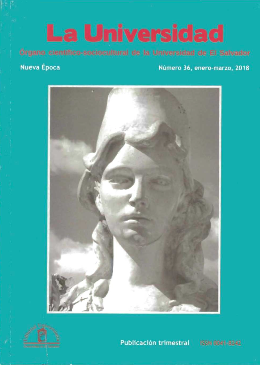Cervantes Ludens
el milagro que no cesa
Keywords:
Cervantes, El Quijote, Modern novelAbstract
The current articJe, written by the Northamerican academic James Iffland, is based on the prem;se that the success ofDon Quixote s;nce itsfirst publication lies in the depletion of the literary gen res that were popular at that time -the novels of chiva/ry and pastoral nove/s. The characters used to be flat, the actions narrated in the adventures ofthe knights containedfantastic elements and extremely exotic situations, which were incrediblefor the bulk ofreaders. Thisfatigue ofthe receiver.c; was known by Cervantes and knew how to take advantage of through a new path: laughter
Downloads
References
Alter, Robert. Partial Magic The Novel as a Self-Conscious Genre. Berkeley: Universíty of California Press, 1975.
Bajtín, Mijail. La cultura popular en la Edad Media y en el Renacimiento: el contexto de Francois Rabelais. Trad. J. Forcat y C. Conroy. Madrid: Alianza, 1987.
Blanco Aguinaga, Carlos. "Cervantes y la picaresca: notas sobre dos tipos de realismo". Nueva Revista de Filología Hispánica, XI (1957),313-42.
Borges, Jorge Luis. "Magias parciales del Quijote." En Otras inquisiciones, 55-58. Buenos Aires: Sur, 1952.
Braudel, Fernand. El Mediterráneo y el mundo mediterráneo en la época de Felipe l/. 2 tomos. Madrid: Fondo de Cultura Económica de España, 2001 [versión original en francés, 1949].
Casasayas. José María y Antonio Bernat Vistarini. eds. Desviaciones lúdicas en la crítica cervantina. Salamanca: Universidad de Salamanca/ Universitat de les Illes Balears,2000.
Cervantes, Miguel de. Don Quijote de la Mancha. Ed. Francisco Rico. Madrid: Real Academia Española. 2004.
Cervantes. Miguel de. Don Quijote de la Mancha. 2 tomos. Ed. Francisco Rico et al. Madrid: Real Academia Española, 2015.
Cervantes, Miguel de. Don Quijote de la Mancha. Edición de la Real Academia Española. adaptada por Arturo Pérez-Reverte. Madrid: Real Academia Española/Santillana. 2014.
Cervantes. Miguel de. Don Quijote de la Mancha, puesto en castellano actual íntegra y fielmente por Andrés Trapiello. Barcelona: Ediciones Destino, 2015.
Cervantes, Miguel de. Novelas ejemplares, tomo I. 4a ed. Ed. Harry Sieber. Madrid: Cátedra, 1982.
Cervantes, Miguel de. Viaje del Parnaso. Biblioteca Virtual Miguel de Cervantes. http://www.cervantesvirtual.comjobra-visorjviajedel-parnaso--Ojhtmljff32aa90-82bl-l1df-acc7-002185ce6064_34.html
Christakis, Dimitri A. y F. Zimmermap, D. DiGiuseppe, C.McCarty. "Early Television Exposure and Subsequent Attentional Problems in Children". Pediatrics. Vol. 113, núm.4 (abril 2004). 708-13.
Cortázar, Julio. "Continuidad de los parques". En Final del juego. Buenos Aires: Sudamericana. 1956.
Dworak, Markus y 1'. Schierl. 1’. Bruns. H. K. Strüder. "Impact of Singular Excessive Computer Game and Television Exposure on Sleep Patterns and Memory Performance of School-aged Children". Pediatrics. Vol. 120. núm. 5 (noviembre 2007), 978 - 85.
Eisenberg. Daniel. Romances of Chivalry. Newark. Delaware: Juan de la Cuesta, 1982.
Gómez Canseco, Luis. "1615: Del Quijote al Quijote". En Alonso Fernández de Avellaneda. Segundo tomo del ingenioso hidalgo don Quijote de la Mancha. 519-34. Ed. L. Gómez Canseco. Madrid: Real Academia Española. 2014.
Gazzaley Adam y Larry D. Rosen. The Distracted Mind: Ancient Brains in the High-Tech World. Cambridge: M.I.T. Press, 2016.
Gilman, Stephen. The Novel According to Cervantes. Berkeley /UCLA: University of California Press, 1989.
Guillén, Claudio. "Genre and Countergenre: The Discovery of the Picaresque". En Literature as System, Essays Toward the Theory of Literary History, 135-58. Princeton: Princeton University Press, 1971.
Huizinga, Johan. Horno ludens. Madrid: Alianza, 2012 [versión original en holandés, 1938].
Johnson, Carroll B. Don Quixote: The Quest for Modern Fiction. Boston: Twayne, 1990.
Johnson, Jeffrey G. y P. Cohen, S. Kasen, J. Brook. "Extensive Television Viewing and the Development of Attention and Learning Difficulties During Adolescence". Archive of Pediatrics and Adolescent Medicine, Vol. 161, núm. 5 (mayo2007), 480 - 486.
Parr James. l/Don Quixote": An Anatomy of Subversive Discourse. Newark, Delaware: Juan de la Cuesta, 1988.
Riley, Edward C. Cervantes's Theory of the Novel. Oxford: Clarendon Press, 1962.
Roubaud, Sylvia. l/Los libros de caballerías". En Don Quijote de la Mancha, t. I, CV-CXXVIII. 2ª ed. Ed. Francisco Rico. Barcelona: Editorial Crítica, 1998.
Vargas Llosa, Mario. "Una novela para el siglo XXI". En Miguel de Cervantes, Don Quijote de la Mancha, XIII-XXVIII. Ed. Francisco Rico. Madrid: Real Academia Española, 2004.
Virilio, Paul. Negative Horizon: An Essay in Dromoscopy [título original: L'Horizon Negatif]. London/New York: Continuum, 2005[1984].
Wicks, Ulrich. "The Nature of Picaresque Narrative: A Modal Approach. PMLA 89 (1974), 240-49.
WilIiams, Raymond. Marxism and Literature. Oxford: Oxford University Press, 1978
Downloads
Published
Issue
Section
License
Copyright (c) 2022 Authors who publish in Revista La Universidad agree to the following terms: Authors continue as owners of their works, non-exclusively assigning dissemination rights to La Universidad Journal under the standards of the Attribution-NonCommercial-ShareAlike License: CC BY-NC-SA 4.0. This license allows the use of a work to create another work or content, modifying or not the original work, as long as the author is cited, the resulting work is shared under the same type of license and has no commercial purposes(https://creativecommons.org/licenses/by-nc-sa/4.0/deed.es).

This work is licensed under a Creative Commons Attribution-NonCommercial-ShareAlike 4.0 International License.





